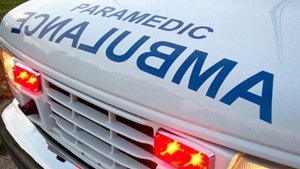A powerful earthquake has struck British Columbia, leaving behind a trail of destruction and chaos. But as residents begin to pick up the pieces and assess the damage, experts are warning of another potential disaster – a “cat soup” flood.
The term “cat soup” may sound strange, but it refers to a phenomenon where liquefaction occurs in the soil after an earthquake, causing it to behave like a liquid. This can lead to severe flooding, as the ground is no longer able to support structures or retain water.
According to the Insurance Bureau of Canada, liquefaction is a common occurrence in areas with loose, sandy soil, such as parts of British Columbia. And with the recent earthquake measuring at a magnitude of 6.2, the risk of liquefaction and subsequent flooding is high.
In fact, the City of Vancouver has already issued a warning to residents in low-lying areas, urging them to be prepared for potential flooding. The city has also advised residents to secure any loose objects and to have an emergency plan in place.
But it’s not just Vancouver that is at risk. The entire province of British Columbia is susceptible to liquefaction, and residents in other areas should also be on high alert.
Experts are also warning that the effects of liquefaction can be long-lasting. In some cases, it can take weeks or even months for the soil to settle back to its original state. This means that even after the initial earthquake, there is still a risk of flooding.
In addition to the physical damage caused by flooding, there is also the financial impact to consider. Homeowners and businesses may face significant repair costs, and some may even be forced to relocate if the damage is too severe.
To mitigate the risk of a “cat soup” flood, experts recommend taking preventative measures such as reinforcing foundations and securing water tanks. It is also important for residents to have a plan in place in case of an emergency.
As British Columbia continues to recover from the earthquake, it is crucial for residents to remain vigilant and take precautions to protect themselves and their property from potential flooding. By staying informed and prepared, we can minimize the impact of this natural disaster and work towards a safer and more resilient community.




